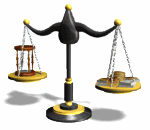| | | For some, investing is risky business. That's because different types of investments carry different amounts of risk and returns.  Risk is the uncertainty that you may not make your expected return on investment There exists a risk-return tradeoff that means you accept more risk in exchange for the chance to earn a higher rate of return In general, if you invest in an opportunity with a lot of risk, then you should expect to get a higher return on investment. Low risk investments typically give you a lower return on investment.  For example, if you place your money in an insured savings account, your money is pretty safe, but the return may be 1%. If you invest in stocks, you might earn 8%. However, stocks are more risky, and you risk losing money, too. For example, if you place your money in an insured savings account, your money is pretty safe, but the return may be 1%. If you invest in stocks, you might earn 8%. However, stocks are more risky, and you risk losing money, too. Some senior citizens won’t invest in the stock market because they think it’s too risky. They can still remember Black Tuesday when the stock market fell 13% in one terrible day: October 28, 1929. From Black Tuesday until the end of 1932, people lost an amazing 89% on stocks! |  Besides the stock market, many people think real estate investing is too risky. It’s true that some investors have been clobbered in real estate in the past. For example, houses in the Northeast states in the 1980s lost 40% of their value. Besides the stock market, many people think real estate investing is too risky. It’s true that some investors have been clobbered in real estate in the past. For example, houses in the Northeast states in the 1980s lost 40% of their value. Nevertheless, most financial experts tell people to invest in both stocks and real estate (especially home ownership), among other investments. Why? Because the gains can outweigh the risks. Some of our country’s largest fortunes, like the Astor family’s and Donald Trump’s, were made in real estate. In 1954, the stock market’s best year, investors made a whopping 43%.  Experts sometimes think in terms of a risk and return triangle (or pyramid) with the less risky categories on the bottom and the high risk ones on top. They advise people to create a strong basis (invest a significant amount) on the bottom of the triangle in safer investments and slowly move up to higher-risk ones (such as foreign stock markets, options, futures, and collectibles). Experts sometimes think in terms of a risk and return triangle (or pyramid) with the less risky categories on the bottom and the high risk ones on top. They advise people to create a strong basis (invest a significant amount) on the bottom of the triangle in safer investments and slowly move up to higher-risk ones (such as foreign stock markets, options, futures, and collectibles). | | | | |  The safest categories are savings and money market accounts, certificates of deposit, and government treasury bills. These investments made about 6.9% to 7.8% profits between 1949 and 2000. The safest categories are savings and money market accounts, certificates of deposit, and government treasury bills. These investments made about 6.9% to 7.8% profits between 1949 and 2000. The stock market and real estate investments returned 10% to 13% over those same fifty years. For an interesting comparison of Iowa land and stock market investments, click here. With riskier investments, it helps if an investor can take his or her time. Over any twenty-year time period, investors have always made money in stocks even considering inflation.  So, the longer you can keep your money in the market, the more likely you are to make money. So, the longer you can keep your money in the market, the more likely you are to make money. The younger you are, the more risk you can take. The reason is that you have more years of earning to make up for any loss. Eric Tyson, author of many investing books, has an easy way for people to determine how much to put in risky investments. He says subtract your age from the number 110. If you’re forty years old, you get 70. That means 70% of your investment can be invested in riskier investments, and the other 30% in safer categories. If you’re 20, you can risk 90%, and so forth. | All experts say you minimize risk when you diversify, which means to invest in more than one category. If real estate goes sour, you might still make money in bonds. If interest rates go too low, your bonds might not do as well as your real estate. Different categories perform differently, and this protects you.  Finally, consider that it is more risky to just hold on to money. Consider that money worth $1,000 in 1926 would only be worth $97.00 today. Check out this calculator on the Minneapolis Federal Reserve Bank site for more. Finally, consider that it is more risky to just hold on to money. Consider that money worth $1,000 in 1926 would only be worth $97.00 today. Check out this calculator on the Minneapolis Federal Reserve Bank site for more. If you had invested that $1,000 in T-bills in 1926, today you’d have $14,940. If you’d put your $1,000 in the stock market and kept it there through the Great Depression and other bad years, today you’d have $2,350,000.  The amount of investment risk you can bear is a personal matter. If the risk you’ve taken on won’t let you sleep at night, you probably should move to a lower-risk investment. If you wish to lower your risk, you must be willing to also accept lower returns since you typically can’t get a high return from a low-risk investment. The amount of investment risk you can bear is a personal matter. If the risk you’ve taken on won’t let you sleep at night, you probably should move to a lower-risk investment. If you wish to lower your risk, you must be willing to also accept lower returns since you typically can’t get a high return from a low-risk investment.  See what you learned. See what you learned. Check out: "You say saving, I say investing" and "Stocks: Owning a Piece of the Action" | |          |